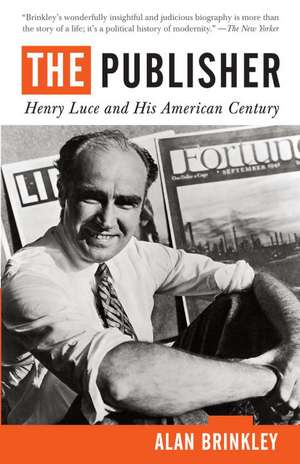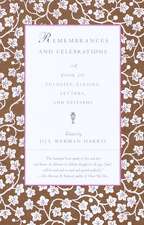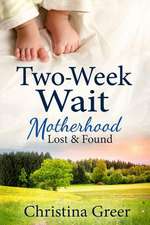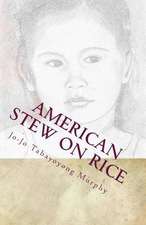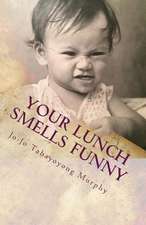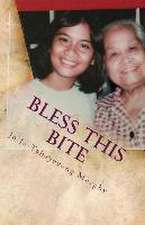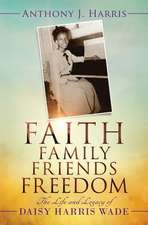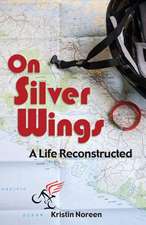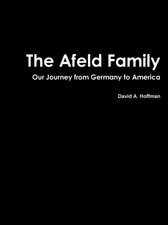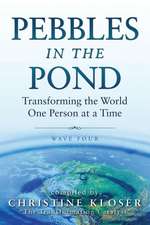The Publisher
Autor Alan Brinkleyen Limba Engleză Paperback – 3 iul 2011
Vezi toate premiile Carte premiată
Ambassador Book Awards (2011)
As the founder of Time, Fortune, and Life magazines, Luce changed the way we consume news and the way we understand our world. Born the son of missionaries, Henry Luce spent his childhood in rural China, yet he glimpsed a milieu of power altogether different at Hotchkiss and later at Yale. While working at a Baltimore newspaper, he and Brit Hadden conceived the idea of Time: a “news-magazine” that would condense the week’s events in a format accessible to increasingly busy members of the middle class. They launched it in 1923, and young Luce quickly became a publishing titan. In 1936, after Time’s unexpected success—and Hadden’s early death—Luce published the first issue of Life, to which millions soon subscribed.
Brinkley shows how Luce reinvented the magazine industry in just a decade. The appeal of Life seemingly cut across the lines of race, class, and gender. Luce himself wielded influence hitherto unknown among journalists. By the early 1940s, he had come to see his magazines as vehicles to advocate for America’s involvement in the escalating international crisis, in the process popularizing the phrase “World War II.” In spite of Luce’s great success, happiness eluded him. His second marriage—to the glamorous playwright, politician, and diplomat Clare Boothe—was a shambles. Luce spent his later years in isolation, consumed at times with conspiracy theories and peculiar vendettas.
The Publisher tells a great American story of spectacular achievement—yet it never loses sight of the public and private costs at which that achievement came.
Preț: 140.13 lei
Nou
Puncte Express: 210
Preț estimativ în valută:
26.82€ • 27.89$ • 22.14£
26.82€ • 27.89$ • 22.14£
Carte disponibilă
Livrare economică 24 martie-07 aprilie
Livrare express 08-14 martie pentru 88.65 lei
Preluare comenzi: 021 569.72.76
Specificații
ISBN-13: 9780679741541
ISBN-10: 0679741542
Pagini: 576
Ilustrații: Illustrations
Dimensiuni: 134 x 203 x 30 mm
Greutate: 0.63 kg
Editura: Vintage Publishing
ISBN-10: 0679741542
Pagini: 576
Ilustrații: Illustrations
Dimensiuni: 134 x 203 x 30 mm
Greutate: 0.63 kg
Editura: Vintage Publishing
Notă biografică
Alan Brinkley is the Allan Nevins Professor of American History at Columbia University. His previous books include Voices of Protest: Huey Long, Father Coughlin, and the Great Depression, which won the National Book Award for History, and The Unfinished Nation: A Concise History of the American People. His essays, articles, and reviews have appeared in The American Historical Review, the Journal of American History, The New York Times Book Review, The New York Review of Books, The Times Literary Supplement, The New Republic, and other publications. He lives in New York City.
Extras
I
Americans Abroad
In the beginning they were a tiny vanguard, clinging precariously to the rim of the great Chinese landmass—a few earnest, lonely, often frightened men and women engaged in an almost entirely futile enterprise. They lived among Western merchants but shared little with them. For their task was not to build trade. It was to save souls.
Generations later, China became a major target of Western capitalism—and a target as well of a much larger and more ambitious missionary project. The missionaries’ task remained difficult and in the end mostly futile. But they were no longer lonely and less often frightened, and they promoted not just Christian faith, but Western progress. The legacy of these missionaries was not only their work, but their children as well—who inherited their parents’ ambition and their sense of duty to do good in the world. Henry R. Luce was one such person—a man whose great power and influence always reflected his childhood among what he considered modern saints, his father among them, and from whom he inherited his own missionary zeal, which he carried with him into the secular world.
The first Christian missionaries in China were Italian Jesuits, who arrived in the late sixteenth century, flourished for a time as favorites of the imperial court, lost that favor as a result of doctrinal controversies, and were mainly gone by the 1790s, having converted few and antagonized many. Early in the nineteenth century some American Catholic priests traveled east from Turkey and Palestine and, like their Jesuit predecessors, entered China alone. They too confronted a complex, sophisticated, insular society whose language they could not speak and whose culture they did not understand. Few stayed for very long.
Starting in the 1830s, as scattered English and American trading outposts grew up along the Chinese coast, another wave of missionaries arrived, this time mostly Protestants. They attached themselves and their families, somewhat uneasily, to the coastal merchant posts and seldom strayed far from them. They were large in ambition but small in numbers. In the decades before the American Civil War, the American Board of Commissioners for Foreign Missions—the principal recruiter of missionaries in the United States—sent only forty-six ordained missionaries (and another fifty or so wives, relatives, and assistants) into all of East Asia, fewer than half of them to China. Perhaps that was because those they did send were so singularly unsuccessful. Protestant missionaries spent eighteen years in China before they won their first native convert.
The Chinese did not become very much more interested in Christianity in the latter decades of the nineteenth century than they had been during the earlier ones. But missionaries became a great deal more interested in China. That was partly because of the expansion of the Western presence in Asia, as American and European businessmen built railroads, created oil companies, and extended their reach inland from the coast. Their growing presence helped open up new areas for missionary activity. More important to the future of the missionary project, however, were events in England and America—several profound shifts in both the theological and institutional foundations of Anglo-American Protestantism.
The social upheavals of the industrial era and the great scientific advances of the late nineteenth century—most notably the widespread acceptance in England and America of Darwin’s theory of evolution—had produced a crisis of faith in many Protestant denominations. Most Anglo-American Protestants responded by moving down one of two new theological paths. One was the road that led, in many cases, to fundamentalism: a fervent defense of traditional theology and a rejection of the new science that seemed to challenge it. But it was also an inspirational belief, because it suggested that preparation for the Second Coming of Christ, when only Christians would be saved and redeemed, required strenuous efforts to expand the community of believers.
Other Protestants—many of whom eventually came to call themselves modernists—chose to accept Darwinism and other scientific discoveries and to adapt their faith to them. Evolution, they argued, was an even more inspirational story than the literal Creation, because it described continuing progress and development through the ages—a process to which they believed living men and women could usefully contribute. It helped inspire the large, diverse movement among late-nineteenth- and early-twentieth-century Protestants that became known as the “Social Gospel,” a commitment to combining faith with active efforts to solve the social problems of the industrial world.
These emerging Protestant factions were at odds with one another on many issues, but they converged, even if somewhat uncomfortably at times, on one of the great Christian projects of the late nineteenth century: the dispatching of thousands of missionaries out into the world. One source of the new missionary fervor was a Bible conference in the summer of 1886 in northern Massachusetts convened by Dwight Moody, a Methodist layman who became one of the most influential evangelists of his time. More than one hundred college students emerged from Moody’s conference having pledged themselves to become missionaries. Their commitment was the beginning of a wave of student interest that over the next two years attracted more than two thousand additional volunteers and that inspired the creation, late in 1888, of the Student Volunteer Movement for Foreign Missions. It soon became the largest and most influential student movement in the nation and spread as well to Canada, Great Britain, Ireland, Australia, New Zealand, and the European continent. By the end of World War I the Student Volunteer Movement (SVM) had dispatched more than eight thousand American missionaries from the United States to foreign lands.
For Moody himself and for many of the student converts, the inspiration for the volunteer movement was the desire to prepare the world for, and thus hasten, the imminent coming of Christ. “The Evangelization of the World in this Generation” was the ambitious, urgent slogan of the new movement. Its most important text was Arthur T. Pierson’s The Crisis of Missions, published in 1886. “The fullness of time has come,” Pierson wrote, “and the end seems at hand, which is also the beginning of the last and greatest age. . . . Such facts mark and make the crisis of the missions. Now or never! Tomorrow will be too late for work that must be done today. . . . He who lags behind will be left behind.” For evangelists, he insisted, “the field is the world.”
But the Student Volunteer Movement also attracted modernists, to whom the end did not seem near and who considered missionary work not just a project of leading believers to Christ but also an effort to uplift the oppressed and improve the life of the world. The president of the Union Theological Seminary in New York argued that “the gospel for heathen lands is not alone a gospel of deliverance for a life to come, but a gospel of social renewal for the life that now is—a gospel that patiently and thoroughly renovates heathen life in its personal, domestic, civic, tribal, national practices and tendencies.” The task of the missions, many volunteers came to believe, was to produce educated elites in “heathen” lands—”a thinking class, a class of leaders,” one missionary wrote—who would be capable both of spreading the faith and of improving society.
Although the Student Volunteer Movement sent missionaries to many parts of the world, some evangelists considered China their greatest and most important challenge: the world’s most populous nation, most of whose hundreds of millions of souls had never been exposed to Christ. “China for Christ” was their rallying cry, and it drew to the Chinese missions the most committed and indomitable of the young volunteers, a new generation, charged with an energy and zeal that transformed and expanded the missionary enterprise.
Among the many energetic, idealistic students attracted to the Student Volunteer Movement in the 1880s was the Yale undergraduate Henry Winters Luce. He was born in 1868 into a moderately prosperous family in Scranton, Pennsylvania; his father owned a wholesale grocery business and was a member of the town’s commercial gentry, a society Henry for many years expected to enter. As a young man he displayed what was for his time a more or less ordinary Christian faith. He participated in the youth activities of the Presbyterian Church and joined the Young People’s Society of Christian Endeavor, commitments balanced against an active social life outside the church community. But he had something more than ordinary energy and ambition. His desire to attend Yale, and his father’s willingness to send him there, was itself evidence of his own and his parents’ exceptional expectations, for in the 1880s going to university—particularly to one as distinguished by its elitism as Yale—was unusual for Scranton, even for the son of a comfortably middle-class family.
As a member of the Yale class of 1892, Harry Luce (as he was known to his classmates) at first followed a relatively conventional path. He pursued the prescribed, largely classical curriculum but also began preparing himself for a career in the law. He joined clubs, became editor of the Yale Courant (a weekly magazine that was the least prestigious of the four campus publications of its time), engaged in spirited arguments with his classmates (developing a reputation as a man of very firm opinions), and became active in the YMCA—for which he also worked in Scranton during the summers. But the most important thing that happened to him at Yale was almost certainly his friendship with Horace Pitkin, a mesmerizing young man of intimidating religiosity. Pitkin shunned liquor, cards, and dancing, and refused to attend events at which any of those things might occur. “He took a stronger stand than any man in the college,” a classmate commented. When he and his friends gathered at night in their rooms at Yale, Pitkin led them in prayer before any ordinary conversation could begin.
Pitkin decided very early that his life would be devoted to the ministry. He became the leader of the Student Volunteer Movement at Yale and committed himself both to joining a foreign mission himself and to persuading others to do so as well. Luce resisted for a time, but in his senior year he finally succumbed to Pitkin’s daunting, inspiring example. According to his own later accounts he experienced an irresistible call to the faith while reading a devotional pamphlet, and he announced to his startled but ultimately supportive family that he would not return to Scranton to read law. He would instead attend divinity school and seek a posting abroad, perhaps in China (where Pitkin also hoped to go). “God willing,” he wrote from college, using the language of his new religious fervor, “. . . I propose to go into the foreign field and witness for Him as best I may in the uttermost parts of the earth.”
Luce and Pitkin moved together from Yale to the Union Theological Seminary in New York, across the street from the site of the new Morningside Heights campus of Columbia University. The two men, and another Yale friend, Sherwood Eddy, met every day (in Luce’s words) “to pray over the things pertaining to ‘our great purpose.’ “ After two semesters at Union, Luce, Pitkin, and Eddy all spent a year as traveling evangelists for the SVM. Luce worked mostly in the American South, where he apparently recruited many new volunteers with his now well-honed religious eloquence and where he also developed a lifelong commitment to racial equality. The following year he enrolled at Princeton Theological Seminary, earned ordination and a degree in 1896, and began traveling for the SVM once again, including another period in the South, where he raised funds for his posting abroad. He had heard much about the revered missionary Calvin Mateer, who had established a small school in Shantung,* China, in the 1860s. By the 1890s it had grown to include a college for Chinese converts to Christianity. Mateer was an important spokesman for combining evangelism with efforts at education and social improvement, and his progressive image of missionary work matched Luce’s own generally modernist sensibility. Luce requested assignment to work with Mateer in China.
On a visit home to Scranton, he met Elisabeth Root, an attractive, well-educated, somewhat reserved young woman who had grown up in Utica, New York, in an unhappy middle-class family blighted by divorce. She was operating a hostel for factory girls run by the YWCA—a classic Social Gospel project. She met Harry at a weekday prayer service, and their mutual attraction was almost immediate. Although Elisabeth did not share Luce’s exuberantly evangelistic temper, she was a woman of deep and active faith (“very religious,” a daughter-in-law once recalled of her, not altogether kindly). In later years she often sent her children long letters consisting entirely of prayers copied from religious tracts. Her earnest charm attracted Luce; his energy and faith attracted her. They were married on June 1, 1897 (in the Presbyterian church Harry had attended through most of his life and in which he had been ordained less than two weeks before). Three months later, after the SVM persuaded James Linen, a Luce family friend in Scranton, to pledge one thousand dollars to support the young couple, Harry and Elisabeth sailed for China, having already conceived their first child.
The opportunities for missionaries in China were a great deal more expansive when Harry and Elisabeth arrived there in 1897 than they had been a generation before. The Western imperial powers—particularly Britain, Germany, France, and the United States—had wrested new concessions from the feeble provincial governments and the even feebler imperial court in Beijing. They had built more railroads, established more businesses, and in some areas—especially Shanghai—created whole urban districts built and populated by Europeans. It was much easier, and seemingly much safer, for Westerners to move around China than it had been earlier in the century.
But missionaries had made contributions of their own to the expansion of their enterprise. Discouraged by their inability to win converts through evangelization alone, they set out to build schools and colleges and to create missionary compounds, where Western clergy could find communities of like-minded people with whom to live. Shantung, in northeast China, was a particularly attractive destination for Western missionaries, with its long coastline and its important ports. It was one of China’s most densely populated regions (even after the departure or death of four million people after floods and famines earlier in the nineteenth century). The growing presence of prosperous German and British businesses eased the lives of missionaries, but it did little to alleviate the great poverty of the vast majority of the Chinese population. The wretchedness of most of the province reinforced the Westerners’ belief that they must work to lift China out of its backwardness and into their own modern world.
The Luces joined Calvin Mateer in the small Christian college he had established at Tengchow, on the Shantung coast. (Their friend Horace Pitkin, now married and a father, was several hundred miles west in Paotingfu—separated from them by a slow and arduous journey that prevented regular visits, although they joined one another on a seaside vacation in the summer of 1898.) The Tengchow college was a modest place: a walled compound containing a little church and a few red-brick buildings, among them some small, spartan homes shared by several missionary families. Both Luces set out quickly to learn the Chinese language, since Mateer himself had been something of a pioneer among missionaries both in learning Chinese and in translating the Bible into the language.
Americans Abroad
In the beginning they were a tiny vanguard, clinging precariously to the rim of the great Chinese landmass—a few earnest, lonely, often frightened men and women engaged in an almost entirely futile enterprise. They lived among Western merchants but shared little with them. For their task was not to build trade. It was to save souls.
Generations later, China became a major target of Western capitalism—and a target as well of a much larger and more ambitious missionary project. The missionaries’ task remained difficult and in the end mostly futile. But they were no longer lonely and less often frightened, and they promoted not just Christian faith, but Western progress. The legacy of these missionaries was not only their work, but their children as well—who inherited their parents’ ambition and their sense of duty to do good in the world. Henry R. Luce was one such person—a man whose great power and influence always reflected his childhood among what he considered modern saints, his father among them, and from whom he inherited his own missionary zeal, which he carried with him into the secular world.
The first Christian missionaries in China were Italian Jesuits, who arrived in the late sixteenth century, flourished for a time as favorites of the imperial court, lost that favor as a result of doctrinal controversies, and were mainly gone by the 1790s, having converted few and antagonized many. Early in the nineteenth century some American Catholic priests traveled east from Turkey and Palestine and, like their Jesuit predecessors, entered China alone. They too confronted a complex, sophisticated, insular society whose language they could not speak and whose culture they did not understand. Few stayed for very long.
Starting in the 1830s, as scattered English and American trading outposts grew up along the Chinese coast, another wave of missionaries arrived, this time mostly Protestants. They attached themselves and their families, somewhat uneasily, to the coastal merchant posts and seldom strayed far from them. They were large in ambition but small in numbers. In the decades before the American Civil War, the American Board of Commissioners for Foreign Missions—the principal recruiter of missionaries in the United States—sent only forty-six ordained missionaries (and another fifty or so wives, relatives, and assistants) into all of East Asia, fewer than half of them to China. Perhaps that was because those they did send were so singularly unsuccessful. Protestant missionaries spent eighteen years in China before they won their first native convert.
The Chinese did not become very much more interested in Christianity in the latter decades of the nineteenth century than they had been during the earlier ones. But missionaries became a great deal more interested in China. That was partly because of the expansion of the Western presence in Asia, as American and European businessmen built railroads, created oil companies, and extended their reach inland from the coast. Their growing presence helped open up new areas for missionary activity. More important to the future of the missionary project, however, were events in England and America—several profound shifts in both the theological and institutional foundations of Anglo-American Protestantism.
The social upheavals of the industrial era and the great scientific advances of the late nineteenth century—most notably the widespread acceptance in England and America of Darwin’s theory of evolution—had produced a crisis of faith in many Protestant denominations. Most Anglo-American Protestants responded by moving down one of two new theological paths. One was the road that led, in many cases, to fundamentalism: a fervent defense of traditional theology and a rejection of the new science that seemed to challenge it. But it was also an inspirational belief, because it suggested that preparation for the Second Coming of Christ, when only Christians would be saved and redeemed, required strenuous efforts to expand the community of believers.
Other Protestants—many of whom eventually came to call themselves modernists—chose to accept Darwinism and other scientific discoveries and to adapt their faith to them. Evolution, they argued, was an even more inspirational story than the literal Creation, because it described continuing progress and development through the ages—a process to which they believed living men and women could usefully contribute. It helped inspire the large, diverse movement among late-nineteenth- and early-twentieth-century Protestants that became known as the “Social Gospel,” a commitment to combining faith with active efforts to solve the social problems of the industrial world.
These emerging Protestant factions were at odds with one another on many issues, but they converged, even if somewhat uncomfortably at times, on one of the great Christian projects of the late nineteenth century: the dispatching of thousands of missionaries out into the world. One source of the new missionary fervor was a Bible conference in the summer of 1886 in northern Massachusetts convened by Dwight Moody, a Methodist layman who became one of the most influential evangelists of his time. More than one hundred college students emerged from Moody’s conference having pledged themselves to become missionaries. Their commitment was the beginning of a wave of student interest that over the next two years attracted more than two thousand additional volunteers and that inspired the creation, late in 1888, of the Student Volunteer Movement for Foreign Missions. It soon became the largest and most influential student movement in the nation and spread as well to Canada, Great Britain, Ireland, Australia, New Zealand, and the European continent. By the end of World War I the Student Volunteer Movement (SVM) had dispatched more than eight thousand American missionaries from the United States to foreign lands.
For Moody himself and for many of the student converts, the inspiration for the volunteer movement was the desire to prepare the world for, and thus hasten, the imminent coming of Christ. “The Evangelization of the World in this Generation” was the ambitious, urgent slogan of the new movement. Its most important text was Arthur T. Pierson’s The Crisis of Missions, published in 1886. “The fullness of time has come,” Pierson wrote, “and the end seems at hand, which is also the beginning of the last and greatest age. . . . Such facts mark and make the crisis of the missions. Now or never! Tomorrow will be too late for work that must be done today. . . . He who lags behind will be left behind.” For evangelists, he insisted, “the field is the world.”
But the Student Volunteer Movement also attracted modernists, to whom the end did not seem near and who considered missionary work not just a project of leading believers to Christ but also an effort to uplift the oppressed and improve the life of the world. The president of the Union Theological Seminary in New York argued that “the gospel for heathen lands is not alone a gospel of deliverance for a life to come, but a gospel of social renewal for the life that now is—a gospel that patiently and thoroughly renovates heathen life in its personal, domestic, civic, tribal, national practices and tendencies.” The task of the missions, many volunteers came to believe, was to produce educated elites in “heathen” lands—”a thinking class, a class of leaders,” one missionary wrote—who would be capable both of spreading the faith and of improving society.
Although the Student Volunteer Movement sent missionaries to many parts of the world, some evangelists considered China their greatest and most important challenge: the world’s most populous nation, most of whose hundreds of millions of souls had never been exposed to Christ. “China for Christ” was their rallying cry, and it drew to the Chinese missions the most committed and indomitable of the young volunteers, a new generation, charged with an energy and zeal that transformed and expanded the missionary enterprise.
Among the many energetic, idealistic students attracted to the Student Volunteer Movement in the 1880s was the Yale undergraduate Henry Winters Luce. He was born in 1868 into a moderately prosperous family in Scranton, Pennsylvania; his father owned a wholesale grocery business and was a member of the town’s commercial gentry, a society Henry for many years expected to enter. As a young man he displayed what was for his time a more or less ordinary Christian faith. He participated in the youth activities of the Presbyterian Church and joined the Young People’s Society of Christian Endeavor, commitments balanced against an active social life outside the church community. But he had something more than ordinary energy and ambition. His desire to attend Yale, and his father’s willingness to send him there, was itself evidence of his own and his parents’ exceptional expectations, for in the 1880s going to university—particularly to one as distinguished by its elitism as Yale—was unusual for Scranton, even for the son of a comfortably middle-class family.
As a member of the Yale class of 1892, Harry Luce (as he was known to his classmates) at first followed a relatively conventional path. He pursued the prescribed, largely classical curriculum but also began preparing himself for a career in the law. He joined clubs, became editor of the Yale Courant (a weekly magazine that was the least prestigious of the four campus publications of its time), engaged in spirited arguments with his classmates (developing a reputation as a man of very firm opinions), and became active in the YMCA—for which he also worked in Scranton during the summers. But the most important thing that happened to him at Yale was almost certainly his friendship with Horace Pitkin, a mesmerizing young man of intimidating religiosity. Pitkin shunned liquor, cards, and dancing, and refused to attend events at which any of those things might occur. “He took a stronger stand than any man in the college,” a classmate commented. When he and his friends gathered at night in their rooms at Yale, Pitkin led them in prayer before any ordinary conversation could begin.
Pitkin decided very early that his life would be devoted to the ministry. He became the leader of the Student Volunteer Movement at Yale and committed himself both to joining a foreign mission himself and to persuading others to do so as well. Luce resisted for a time, but in his senior year he finally succumbed to Pitkin’s daunting, inspiring example. According to his own later accounts he experienced an irresistible call to the faith while reading a devotional pamphlet, and he announced to his startled but ultimately supportive family that he would not return to Scranton to read law. He would instead attend divinity school and seek a posting abroad, perhaps in China (where Pitkin also hoped to go). “God willing,” he wrote from college, using the language of his new religious fervor, “. . . I propose to go into the foreign field and witness for Him as best I may in the uttermost parts of the earth.”
Luce and Pitkin moved together from Yale to the Union Theological Seminary in New York, across the street from the site of the new Morningside Heights campus of Columbia University. The two men, and another Yale friend, Sherwood Eddy, met every day (in Luce’s words) “to pray over the things pertaining to ‘our great purpose.’ “ After two semesters at Union, Luce, Pitkin, and Eddy all spent a year as traveling evangelists for the SVM. Luce worked mostly in the American South, where he apparently recruited many new volunteers with his now well-honed religious eloquence and where he also developed a lifelong commitment to racial equality. The following year he enrolled at Princeton Theological Seminary, earned ordination and a degree in 1896, and began traveling for the SVM once again, including another period in the South, where he raised funds for his posting abroad. He had heard much about the revered missionary Calvin Mateer, who had established a small school in Shantung,* China, in the 1860s. By the 1890s it had grown to include a college for Chinese converts to Christianity. Mateer was an important spokesman for combining evangelism with efforts at education and social improvement, and his progressive image of missionary work matched Luce’s own generally modernist sensibility. Luce requested assignment to work with Mateer in China.
On a visit home to Scranton, he met Elisabeth Root, an attractive, well-educated, somewhat reserved young woman who had grown up in Utica, New York, in an unhappy middle-class family blighted by divorce. She was operating a hostel for factory girls run by the YWCA—a classic Social Gospel project. She met Harry at a weekday prayer service, and their mutual attraction was almost immediate. Although Elisabeth did not share Luce’s exuberantly evangelistic temper, she was a woman of deep and active faith (“very religious,” a daughter-in-law once recalled of her, not altogether kindly). In later years she often sent her children long letters consisting entirely of prayers copied from religious tracts. Her earnest charm attracted Luce; his energy and faith attracted her. They were married on June 1, 1897 (in the Presbyterian church Harry had attended through most of his life and in which he had been ordained less than two weeks before). Three months later, after the SVM persuaded James Linen, a Luce family friend in Scranton, to pledge one thousand dollars to support the young couple, Harry and Elisabeth sailed for China, having already conceived their first child.
The opportunities for missionaries in China were a great deal more expansive when Harry and Elisabeth arrived there in 1897 than they had been a generation before. The Western imperial powers—particularly Britain, Germany, France, and the United States—had wrested new concessions from the feeble provincial governments and the even feebler imperial court in Beijing. They had built more railroads, established more businesses, and in some areas—especially Shanghai—created whole urban districts built and populated by Europeans. It was much easier, and seemingly much safer, for Westerners to move around China than it had been earlier in the century.
But missionaries had made contributions of their own to the expansion of their enterprise. Discouraged by their inability to win converts through evangelization alone, they set out to build schools and colleges and to create missionary compounds, where Western clergy could find communities of like-minded people with whom to live. Shantung, in northeast China, was a particularly attractive destination for Western missionaries, with its long coastline and its important ports. It was one of China’s most densely populated regions (even after the departure or death of four million people after floods and famines earlier in the nineteenth century). The growing presence of prosperous German and British businesses eased the lives of missionaries, but it did little to alleviate the great poverty of the vast majority of the Chinese population. The wretchedness of most of the province reinforced the Westerners’ belief that they must work to lift China out of its backwardness and into their own modern world.
The Luces joined Calvin Mateer in the small Christian college he had established at Tengchow, on the Shantung coast. (Their friend Horace Pitkin, now married and a father, was several hundred miles west in Paotingfu—separated from them by a slow and arduous journey that prevented regular visits, although they joined one another on a seaside vacation in the summer of 1898.) The Tengchow college was a modest place: a walled compound containing a little church and a few red-brick buildings, among them some small, spartan homes shared by several missionary families. Both Luces set out quickly to learn the Chinese language, since Mateer himself had been something of a pioneer among missionaries both in learning Chinese and in translating the Bible into the language.
Recenzii
“How fortunate we are . . . that Luce is now the subject of a monumental, magisterial biography, the finest ever written about an American journalist.”
—Jonathan Yardley, The Washington Post
“Brinkley has a gift for restoring missing dimensions to figures who have been flattened into caricature. . . . The book does full justice to Luce’s outsider insecurity, his blind affinity for men of power and his defects as a family man. But it is a humanizing portrayal, and it credits the role his magazines, Time and Life especially, played in a country growing uneasily into the dominant geopolitical force in the world.”
—Bill Keller, The New York Times Book Review
“Brinkley’s wonderfully insightful and judicious biography is more than the story of a life; it’s a political history of modernity.”
—Jill Lepore, The New Yorker
“Graceful and judicious . . . Mr. Brinkley is dauntless in assessing Luce’s most important accomplishments.”
—Janet Maslin, The New York Times
“A finely calibrated book. . . . [Brinkley] brings an even-handed synthesis and a dispassionate sense of history.”
—Gene Krzyzynski, Buffalo News
“Alan Brinkley has done history and media buffs a tremendous service with this well-written and balanced biography of Henry Luce. . . . [Brinkley] is especially effective at placing events in historical context, and rarely does his narrative bog down with too much arcane information . . . Essential reading for anyone interested in learning about modern mass communication though the prism of the life of one of its founding fathers.”
—Claude R. Marx, Boston Globe
“Brinkley re-creates Luce as an Eminent American, royally and sometimes picturesquely flawed.”
—Nicholas Fraser, Harper’s
“Brinkley’s thoroughly researched work charts the intersections of the man, magazines and world events that were inextricably bound together, leaving the reader inspired by Luce’s hard-won success and the author’s sense of detail in brining Luce’s story to life. . . . While Brinkley writes with the confident voice of an experienced storyteller and the attendant thoroughness and impartiality of a historian of his caliber, his quiet admiration for his subject lies just beneath the surface throughout this account of Henry Luce and his times.”
—Lydia Beyoud, The Oregonian
“The triumph of Brinkley’s biography is not in a single thesis but in the disciplined, well-judged way the author presents and knits in telling fragments from the millions of words, letters, interviews, and documents. . . . Ambitious, authoritative, and enjoyable.”
—Harold Evans, The Daily Beast
“A superbly engrossing biography.”
—Philip Seib, The Dallas Morning News
“Commanding . . . a memorable march through Time.”
—Andrew Burstein, Baton Rouge Advocate
“A largely sympathetic and terrifically engrossing biography.”
—Maureen Corrigan, npr.org
“Brinkley tells of a life once well-known but now as dimly remembered as Life magazine . . . refreshingly nonacademic.”
—Harry Levins, St. Louis Post Dispatch
“Brinkley has told Luce’s saga with scrupulous fairness, compelling detail and more than a tinge of affection for his vast ambitions and vexing frailties . . . with the rigor, honesty and generosity that Luce’s own magazine’s too often sacrificed to the proprietor’s enormous ego and will to power.”
—Edward Kosner, The Wall Street Journal
“A real gift. . . .Brinkley has given us the enviable model of a man of his moment.”
—James R. Gaines, Columbia Magazine
“Brinkley appears to have read every issue from the early decades of Time, Fortune, and Life cover to cover, grounding his criticisms of Luce’s social and political vision in rigorous detail. He’s equally solid on Luce’s personal life. . . . A top-notch biography, and a valuable addition to the history of American media.”
—Publishers Weekly (Starred review)
“This brilliant and absorbing book sets Henry Luce in his true historical context. Brinkley brings Luce vividly back to life, unveils his complex marriages and glittering social circles and shows us how much Luce changed American society. The Publisher recreates the seemingly now-distant moment at which traditional American media were at the peak of their power.”
—Michael Beschloss, author of Presidential Courage
“A thoroughly researched, nuanced appreciation of a complex, talented and troubled man.”
—Kirkus (Starred review)
“In this superb biography Alan Brinkley, a Columbia University historian, has told the curiously depressing story of a brilliant man who got everything wrong, including so many of the things that mattered most to him. Mr Brinkley has an eye for both the telling detail and the broad sweep of Luce’s role as the man who saw the need for a national news magazine and foresaw the American century.”
—The Economist
“Alan Brinkley is the modern master of ‘Not-so-fast.’ Caricature and dinner-table gossip and received opinion never satisfy him for a moment, as this deft, vivid and admirably fair-minded portrait of the cofounder of America’s most influential magazine empire makes clear. Brinkley has pinned the authentic Henry Luce to paper—gifted as well as grandiose, simultaneously vain and vulnerable, dogmatic and deeply curious, an essentially lonely man who seemed to know everyone but never found the warm companionship he craved.”
—Geoffrey C. Ward, author of A First-Class Temperament
“Alan Brinkley’s portrait of the remarkable Henry Luce is never less than captivating. From Luce’s childhood in China through prep school and Yale to the founding of TIME, the battles over FORTUNE and the spectacular success of Life (a success which proved disastrous for the first year’s profit/loss statement), the narrative pulses forward, never flagging for an instant. The analysis of the reasons why all three magazines succeeded by catching hold of the American 20th century zeitgeist is nothing less than extraordinary. And Brinkley does it all without Whiggish presumptions or larding his narrative with triumphalism or condescension.”
—David Nasaw, author of The Chief: The Life of William Randolph Hearst
“Rarely have author and subject been so ideally matched. Alan Brinkley, one of our most distinguished historians of 20th Century America, here explores the world, the mind, the magazines, the business empire and the remarkable ambition of Henry Luce, one of a tiny number of media titans who leave a palpable mark on their times. The book is paced like a thriller; it tells a story that is funny and appalling and fascinating by turns, an only-in-America account of an enormous ego at work. This is the way history should be written.”
—Robert G. Kaiser, author of So Damn Much Money: The Triumph of Lobbying and the Corrosion of American Government
“Alan Brinkley’s The Publisher is an exquisite work of scholarship—widely researched and even-handedly descriptive of the controversial Henry Luce. The book is a window on the life and times of the man who did so much to shape 20th-century magazine journalism. No one interested in recent U.S. history will want to miss this splendid biography.”
—Robert Dallek, author of An Unfinished Life: John F. Kennedy, 1917–1963
—Jonathan Yardley, The Washington Post
“Brinkley has a gift for restoring missing dimensions to figures who have been flattened into caricature. . . . The book does full justice to Luce’s outsider insecurity, his blind affinity for men of power and his defects as a family man. But it is a humanizing portrayal, and it credits the role his magazines, Time and Life especially, played in a country growing uneasily into the dominant geopolitical force in the world.”
—Bill Keller, The New York Times Book Review
“Brinkley’s wonderfully insightful and judicious biography is more than the story of a life; it’s a political history of modernity.”
—Jill Lepore, The New Yorker
“Graceful and judicious . . . Mr. Brinkley is dauntless in assessing Luce’s most important accomplishments.”
—Janet Maslin, The New York Times
“A finely calibrated book. . . . [Brinkley] brings an even-handed synthesis and a dispassionate sense of history.”
—Gene Krzyzynski, Buffalo News
“Alan Brinkley has done history and media buffs a tremendous service with this well-written and balanced biography of Henry Luce. . . . [Brinkley] is especially effective at placing events in historical context, and rarely does his narrative bog down with too much arcane information . . . Essential reading for anyone interested in learning about modern mass communication though the prism of the life of one of its founding fathers.”
—Claude R. Marx, Boston Globe
“Brinkley re-creates Luce as an Eminent American, royally and sometimes picturesquely flawed.”
—Nicholas Fraser, Harper’s
“Brinkley’s thoroughly researched work charts the intersections of the man, magazines and world events that were inextricably bound together, leaving the reader inspired by Luce’s hard-won success and the author’s sense of detail in brining Luce’s story to life. . . . While Brinkley writes with the confident voice of an experienced storyteller and the attendant thoroughness and impartiality of a historian of his caliber, his quiet admiration for his subject lies just beneath the surface throughout this account of Henry Luce and his times.”
—Lydia Beyoud, The Oregonian
“The triumph of Brinkley’s biography is not in a single thesis but in the disciplined, well-judged way the author presents and knits in telling fragments from the millions of words, letters, interviews, and documents. . . . Ambitious, authoritative, and enjoyable.”
—Harold Evans, The Daily Beast
“A superbly engrossing biography.”
—Philip Seib, The Dallas Morning News
“Commanding . . . a memorable march through Time.”
—Andrew Burstein, Baton Rouge Advocate
“A largely sympathetic and terrifically engrossing biography.”
—Maureen Corrigan, npr.org
“Brinkley tells of a life once well-known but now as dimly remembered as Life magazine . . . refreshingly nonacademic.”
—Harry Levins, St. Louis Post Dispatch
“Brinkley has told Luce’s saga with scrupulous fairness, compelling detail and more than a tinge of affection for his vast ambitions and vexing frailties . . . with the rigor, honesty and generosity that Luce’s own magazine’s too often sacrificed to the proprietor’s enormous ego and will to power.”
—Edward Kosner, The Wall Street Journal
“A real gift. . . .Brinkley has given us the enviable model of a man of his moment.”
—James R. Gaines, Columbia Magazine
“Brinkley appears to have read every issue from the early decades of Time, Fortune, and Life cover to cover, grounding his criticisms of Luce’s social and political vision in rigorous detail. He’s equally solid on Luce’s personal life. . . . A top-notch biography, and a valuable addition to the history of American media.”
—Publishers Weekly (Starred review)
“This brilliant and absorbing book sets Henry Luce in his true historical context. Brinkley brings Luce vividly back to life, unveils his complex marriages and glittering social circles and shows us how much Luce changed American society. The Publisher recreates the seemingly now-distant moment at which traditional American media were at the peak of their power.”
—Michael Beschloss, author of Presidential Courage
“A thoroughly researched, nuanced appreciation of a complex, talented and troubled man.”
—Kirkus (Starred review)
“In this superb biography Alan Brinkley, a Columbia University historian, has told the curiously depressing story of a brilliant man who got everything wrong, including so many of the things that mattered most to him. Mr Brinkley has an eye for both the telling detail and the broad sweep of Luce’s role as the man who saw the need for a national news magazine and foresaw the American century.”
—The Economist
“Alan Brinkley is the modern master of ‘Not-so-fast.’ Caricature and dinner-table gossip and received opinion never satisfy him for a moment, as this deft, vivid and admirably fair-minded portrait of the cofounder of America’s most influential magazine empire makes clear. Brinkley has pinned the authentic Henry Luce to paper—gifted as well as grandiose, simultaneously vain and vulnerable, dogmatic and deeply curious, an essentially lonely man who seemed to know everyone but never found the warm companionship he craved.”
—Geoffrey C. Ward, author of A First-Class Temperament
“Alan Brinkley’s portrait of the remarkable Henry Luce is never less than captivating. From Luce’s childhood in China through prep school and Yale to the founding of TIME, the battles over FORTUNE and the spectacular success of Life (a success which proved disastrous for the first year’s profit/loss statement), the narrative pulses forward, never flagging for an instant. The analysis of the reasons why all three magazines succeeded by catching hold of the American 20th century zeitgeist is nothing less than extraordinary. And Brinkley does it all without Whiggish presumptions or larding his narrative with triumphalism or condescension.”
—David Nasaw, author of The Chief: The Life of William Randolph Hearst
“Rarely have author and subject been so ideally matched. Alan Brinkley, one of our most distinguished historians of 20th Century America, here explores the world, the mind, the magazines, the business empire and the remarkable ambition of Henry Luce, one of a tiny number of media titans who leave a palpable mark on their times. The book is paced like a thriller; it tells a story that is funny and appalling and fascinating by turns, an only-in-America account of an enormous ego at work. This is the way history should be written.”
—Robert G. Kaiser, author of So Damn Much Money: The Triumph of Lobbying and the Corrosion of American Government
“Alan Brinkley’s The Publisher is an exquisite work of scholarship—widely researched and even-handedly descriptive of the controversial Henry Luce. The book is a window on the life and times of the man who did so much to shape 20th-century magazine journalism. No one interested in recent U.S. history will want to miss this splendid biography.”
—Robert Dallek, author of An Unfinished Life: John F. Kennedy, 1917–1963
Premii
- Ambassador Book Awards Winner, 2011
